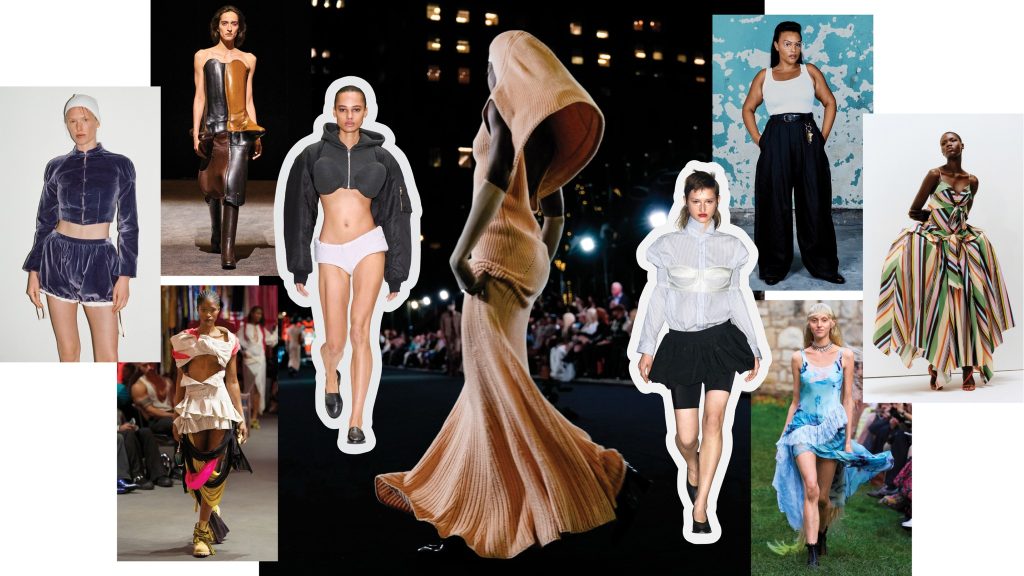Blogs
Quiet Luxury Is Fading. What’s Next Is Much More Fun.
Independent designers are ushering in an era of spectacularly singular style.
Carmel Snow knew it when she saw it. After attending Christian Dior’s debut collection on February 12, 1947, in Paris, the then-editor of Harper’s Bazaar felt such a jolt that she famously declared that his designs had “such a new look.” The silhouette Dior unveiled that day has since become one of the most influential, recognizable ones in fashion history: a cinched waist with a full skirt that creates a distinctively feminine hourglass shape.
Dior’s New Look was revolutionary. Arriving in the wake of the Second World War, after a period when fashion, very much out of necessity, had become utilitarian, it signaled a return to dressing with intention.
Timing is everything in fashion. An unmistakable new silhouette or set of codes always arrives as a result of a confluence of social, cultural, political, and economic forces. Often, these bold shifts in design are representative of our collective reaction to what came before, a way of engaging and reckoning with larger shifts in the culture and as a way of proposing and imagining a new way forward.

It’s been five years since the start of the pandemic, and we’ve collectively, if a bit numbly, journeyed through the gentle, elastic-waisted embrace of loungewear and dutifully followed the algorithm as it wends its way through various trends and tropes, from quiet luxury to … quieter luxury.
We’re undeniably at the dawn of a new era now—one that has just barely begun to come into focus. But what’s starting to emerge is louder, stranger even, and, above all, deeply personal. There is a collective yearning for the special, for ejecting ourselves from the stultifying sameness of our targeted feeds. As designer Willy Chavarria told Bazaar just before showing his Fall 2025 collection in Paris in January, “Everyone is pretty much bored with fashion as it is. Luxury is looking for something to excite people.”
In many of the Spring 2025 collections, there was a palpable exuberance; fashion had gotten its pulse back. I’m thinking, chiefly, of a cadre of independent designers whose work feels propelled by something more than market research—by things like intuition and identity. Their proposals for how we get dressed now feel like the opposite of a uniform; these are newnew looks that allow for radical self-expression. They don’t conform to any mold; rather, they invite the wearer to break it.
These are the new signs and signifiers in fashion. You know a Luar Ana bag, with its briefcase structure and loop handle, when you see one. You can tell, when someone is wearing a pair of oversize carpenter jeans or a baggy suit, that it’s Chavarria. That colorblocked taffeta ball gown worn with a striped knit is most definitely Christopher John Rogers. A top made entirely of spoons? Has to be Hodakova. There’s that Chopova Lowena skirt with plaid accordion pleats held up by carabiners and a thick leather belt. Wearing your bra over your T-shirt has become a style staple for downtown cool kids, thanks to Vaquera. And let’s not forget kaleidoscopic printed cargo pants and embellished hoodies, hallmarks of Hillary Taymour’s Collina Strada.
This is not to say these designs aren’t operating within distinct traditions. Chavarria’s oversize tailoring melds Yves Saint Laurent’s sharp tuxedos with the zoot suits of his Chicano culture. Raul Lopez of Luar’s structured shoulders and modern commutercore suits and dresses recall Azzedine Alaïa’s spectacularly sexy bodycon clothes. Rogers’s exaggerated ball skirts have a connection to the cocoon shapes of Cristóbal Balenciaga or Charles James’s full-skirted gowns. Vaquera’s artfully mashed up layering and off-kilter cuts are related to Martin Margiela’s deconstruction. Taymour’s Gen Z ravers-cum-flower children are kindred spirits with Anna Sui’s hippie kids. And Duran Lantink’s bulbous shapes are simpatico with Rei Kawakubo’s absurdist proportion play. They’re evolutions but also total reinventions.

Charlie Porter, a fashion critic and the author of Bring No Clothes: Bloomsbury and the Philosophy of Fashion, equates this movement to the widening of the gap between fashion as a commercial enterprise and fashion as a form of creative expression. Letting vision and independence dictate a brand’s direction is key to harnessing cultural power, Porter observes, just as it has been, for example, in the music business with singular artists like Chappell Roan and Charli XCX. He sees more and more independent designers letting go of the thought that in order to succeed, they need to become a big behemoth label, a machine churning out product. This is especially true in New York, Porter notes, where designers are realizing that “being a fashion brand [versus trying to create a luxury business] is more than okay; it’s actually way more exciting, viable, and kinetic.”
“In an extremely crowded market, being able to have substantial brand equity that can carry you through the fickleness of fashion and trends is important,” says Christopher John Rogers, who returned to the New York Fashion Week calendar for Fall 2025, for the first time since 2022. For him, that means “pragmatic glamour” and bold colorways, as well as distinct silhouettes that play on the elegant classics but are distinct in their sharpness.
Rogers has dressed the likes of Michelle Obama and Doechii. Having such fearless dressers wear your designs puts forth a new perspective on how we can present ourselves to the world.
When your clothes can reflect your outlook, they find an audience. Turkish-British London-based designer Dara Findikoğlu is known for her undone, Gothic-style corsets that subvert the male gaze. Her rebellious, feminist approach to fashion resonates with like-minded celebrities like Chloë Sevigny, who wore an off-the-shoulder Victorian gown with the bodice ripped open at the front to last year’s Met Gala, and Julia Fox, who wore a sheer corseted and lace gown to the 2024 Fashion Awards in London.
There’s also Colleen Allen, one of New York’s darling designers of the moment, who has a Madeleine Vionnet–esque approach to romantic draping and tailoring, but made modern. Her Spring 2025 collection features splendid soft dresses with touches of Grecian draping, as well as Victorian underpinnings like velvet bloomers and sheer capris decorated with a tiny rosette at the waist. Formerly a menswear designer, Allen found power in beginning her process not by focusing on turning men’s silhouettes into women’s shapes but by embracing the reverse. “I’ve realized that the Victorian era is a really amazing time for women’s tailoring because it’s in contrast to the traditional way of working, where we often start with menswear tailoring techniques,” she says. “I am creating acts of resistance that bring more ritual and esoteric strength to the wearer, imbuing them with a mystical power.”

